Anti-ATP6V1A Rabbit pAb (100 μl)
| Reactivity: | H,M,R & H,M,R |
| Applications: | WB & IHC/IF |
| Host Species: | Rabbit |
| Clonality: | Polyclonal |
| Full Name: | ATP6V1A rabbit polyclonal antibody |
Gene Name: | V-type proton ATPase catalytic subunit A |
Synonyms: | ATP6A1, ATP6V1A, ATP6V1A1, HO68, V ATPase 69 kDa subunit, V ATPase subunit A, VA68, Vacuolar ATPase isoform VA68, Vma1, VPP2 |
Immunogen: | Recombinant protein corresponding to Mouse ATP6V1A |
Isotype: | IgG |
Purity: | Affinity purification |
Subcellular location: | Cytoplasm |
Predicted MW. | 68 kDa |
Observed MW. | 68 kDa |
Uniprot ID: | P50516 |
Product Usage Information
Applications | Species | Dilution | Positive Sample |
WB | Human, Mouse, Rat | 1: 3000-1: 6000 | brain, kidney, prostate |
IHC/IF | Human, Mouse, Rat | 1: 800-1: 1600 | kidney |
Background
The vacuolar-type H(+)-ATPase (V-ATPase) is responsible for the acidification of endosomes, lysosomes, and other intracellular organelles. It is also involved in hydrogen ion transport across the plasma membrane into the extracellular space. The V-ATPase is a multisubunit complex with cytosolic and transmembrane domains. The cytosolic catalytic domain consists of 3 A subunits and 3 B subunits, which bind and hydrolyze ATP, as well as regulatory accessory subunits.ATP6V1A is V-type proton ATPase catalytic subunit A.
Images
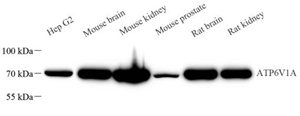 | Western blot analysis of ATP6V1A (GB113989) at dilution of 1: 3000 |
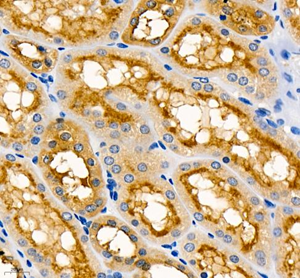 | Immunohistochemistry of paraffin embedded human kidney using ATP6V1A (GB113989) at dilution of 1: 800 |
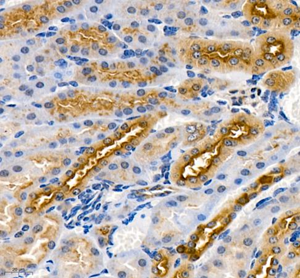 | Immunohistochemistry of paraffin embedded mouse kidney using ATP6V1A (GB113989) at dilution of 1: 800 |
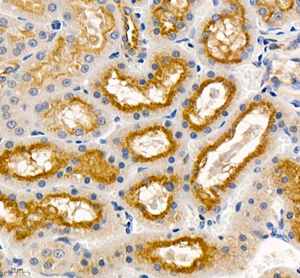 | Immunohistochemistry of paraffin embedded rat kidney using ATP6V1A (GB113989) at dilution of 1: 800 |
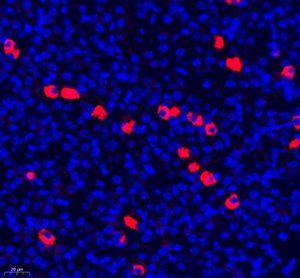 | Immunofluorescence of paraffin embedded mouse kidney using ATP6V1A (GB113989) at dilution of 1: 1400 |
 | Immunofluorescence of paraffin embedded rat kidney using ATP6V1A (GB113989) at dilution of 1: 1400 |
Storage
| Storage | Store at -20°C for one year. Avoid repeated freeze/thaw cycles. |
| Storage Buffer | PBS with 0.02%sodium azide,100 μg/ml BSA and 50% glycerol. |
